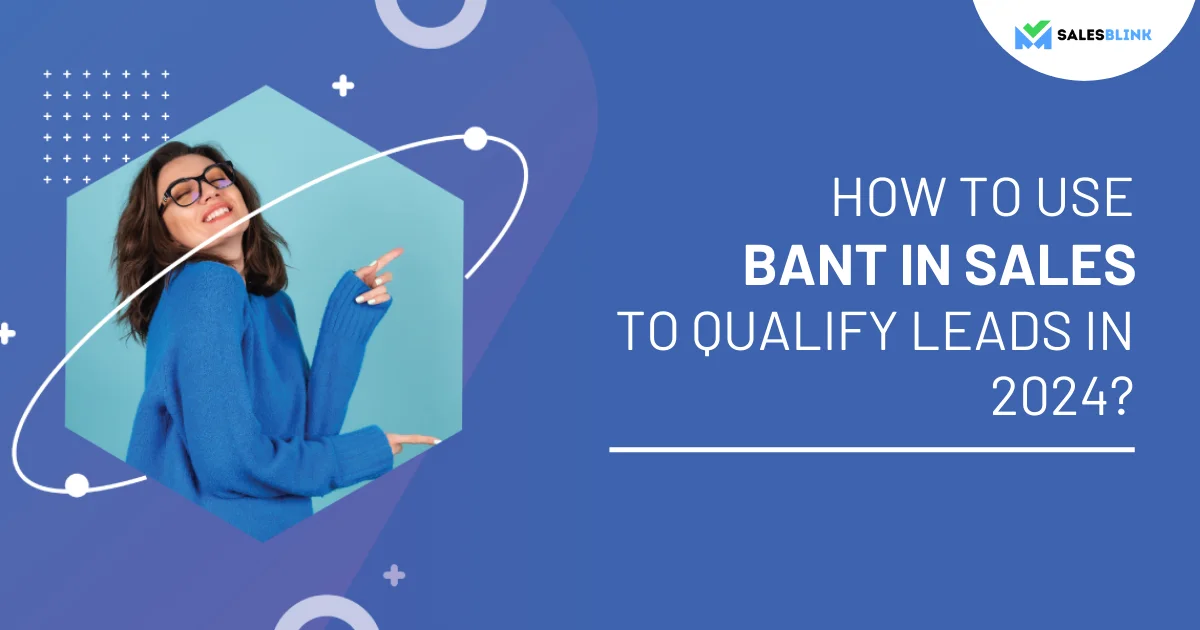How To Use BANT In Sales To Qualify Leads in 2024?
Do you know that 67% of sales reps spend time on unqualified leads? If you are one of them, you will be in trouble! In today’s competitive sales world, qualifying prospects before investing your time and energy into them is more important. That’s where BANT in sales comes in.
BANT is a simple framework that can help you qualify leads more quickly and accurately. It stands for Budget, Authority, Need, and Timeline. Using BANT, you can easily determine whether a lead is qualified to buy from you or not.
Don’t know how to use it? No problem; in this blog post, we’ll look closely at BANT and how you can use it to qualify leads more effectively. We’ll also provide some tips on how to use BANT to close more deals.
So what are you waiting for? Start reading today and boost your sales!
Table of Contents
- What Is BANT In Sales?
- How Is The BANT Sales Qualification Framework Unique?
- What Are The Elements Of The BANT Sales Process?
- Is The BANT Sales Qualification Framework Suitable For Your Team?
- Pros of Using BANT
- Cons of Using BANT
- How Can You Use The BANT Framework To Qualify Prospects?
- BANT Lead Qualification Questions
- BANT Alternatives
- FAQs
What Is BANT In Sales?
BANT is a lead qualification framework sales teams use to identify and qualify leads. It stands for Budget, Authority, Need, and Timeline.
The BANT sales qualification framework was developed in the 1950s by IBM to improve its sales process.
In the past, IBM sales reps spent months or even years trying to close a deal. To address this, IBM developed the BANT sales process, which helps sales reps quickly qualify prospects and focus on the most promising leads.
The BANT sales methodology has stood the test of time, but some modern sales reps believe it is outdated. However, the four factors that BANT stands for are still important considerations when making a purchasing decision.
As a sales rep, you can quickly determine whether a lead is a perfect fit for their product or service by asking the following four questions.
- Budget: How much money is the prospect willing and able to spend on your product/ service?
- Authority: Who is the decision-maker in this sale? Who has the authority to approve a purchase?
- Need: Does the prospect have a problem that your solution can solve?
- Timeline: When is the prospect looking to close the deal?
How Is The BANT Sales Qualification Framework Unique?
The BANT lead qualification process is a classic method of qualifying prospects for B2B sales.
The BANT method is unique because it is a straightforward way to assess a prospect’s buying potential. Sales reps can quickly determine whether a prospect is worth pursuing by asking suitable questions around the 4 criteria.
BANT methodology is also unique because it can be used at any stage of the sales process. You can use it to qualify sales leads, prioritize opportunities, and close deals. Thus, BANT is a valuable tool for any sales team that wants to increase the win rate.
What Are The Elements Of The BANT Sales Process?
After understanding BANT in sales, let’s look into the different elements of the BANT methodology. BANT’s four elements – Budget, Authority, Need, and Timeline qualify leads and identify which ones are more likely to convert.
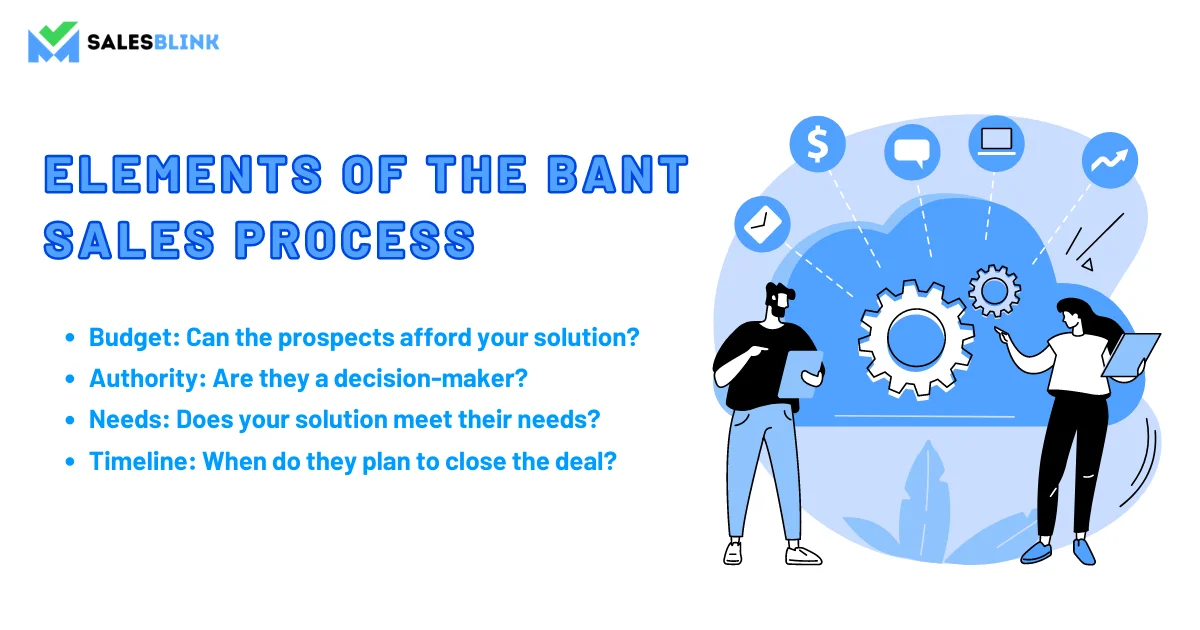
Budget: Can the prospects afford your solution?
Budget is an essential element of the BANT methodology, as it helps sales reps identify and qualify leads who are likely to convert.
Thus, discussing the budget at an early stage of the sales process is crucial. Studies have shown that win rates improve by about 10% when the budget is discussed within the first sales conversation.
By asking about the prospect’s budget early in the sales process, you can avoid wasting time and resources on leads who are not a good fit.
Authority: Are they a decision-maker?
The authority criterion of BANT in sales refers to the individuals who have the power to make a purchase decision. To close a deal, it’s important to identify and build relationships with these decision-makers.
There are a few ways to identify decision-makers. One is to ask the prospect directly who is involved in the buying process. Another is to research the company’s website and social media pages to see who is listed as a decision-maker.
Once you’ve identified decision-makers, you can start building relationships by sending them emails, connecting with them on LinkedIn, and scheduling calls.
Building relationships with decision-makers is essential for closing deals. By getting to know them and understanding their needs, you can position yourself as the expert who can help them solve their problem.
Needs: Does your solution meet their needs?
The “Needs” component of the BANT framework is about understanding the prospect’s pain points and how your solution can solve them.
To do this, you must ask questions to prospects and carefully listen to the answers. You must also mention how your solution will help the prospect save time and money or improve their bottom line.
Here are some example questions you can ask to assess the prospect’s needs:
- What are your biggest challenges right now?
- What are your goals for the future?
- How much time and money are you currently spending on (problem area)?
- How do you think our solution could help you achieve your goals?
If you demonstrate that your solution meets the prospect’s needs, you’ll be well on closing the deal.
Timeline: When do they plan to close the deal?
The last component of BANT in sales is the timeline. It refers to the time frame within which the prospect plans to make a purchase. This information is vital for you as a sales rep to know as it helps prioritize your leads and plan your sales process accordingly.
For example, if a prospect plans to purchase within the next few weeks, you must act quickly to close the deal. However, suppose the prospect intends to wait to purchase for several months. In that case, you can take your time to build a relationship with the client and demonstrate the value of your product or service.
Here are some questions that sales reps can ask to understand the prospect’s timeline:
- Are there any upcoming deadlines or events that are driving this need?
- Is there any urgency to this purchase?
- What is the average time to market for a new partner integration?
Is The BANT Sales Qualification Framework Suitable For Your Team?
BANT is a classic sales qualification framework that can help your team focus on the most promising leads.
However, it is essential to note that BANT sales is not a perfect system and may not be appropriate for all types of deals.
The deciding factor of whether BANT is suitable for your sales team depends on several options, including the size and complexity of your sales process, the types of solutions you sell, and the needs of your target market.
BANT framework may be a good option if you are looking for a simple way to qualify leads. However, consider a different framework if you are looking for a more detailed approach.
Pros of Using BANT
Here are some of the pros of using BANT in sales:
- Saves time: BANT can help you as a sales rep to quickly qualify leads and focus your efforts on the most promising opportunities.
- Increases focus: By asking the right questions about budget, authority, needs, and timeline, you can ensure you only pursue leads who are a good fit for their product or service.
- Improves close rates: Focusing on the most qualified leads can improve your chances of closing deals.
Cons of Using BANT
The cons of using BANT in sales are mentioned below:
- Doesn’t account for the buyer’s journey: BANT doesn’t account for the buyer’s journey. It assumes that all prospects are ready to buy when they may be in the early stages of the buying process. This can lead to wasting your time and resources on prospects who are not ready to buy.
- Not customizable: BANT is a one-size-fits-all framework. It doesn’t allow for customization, which can be a problem for businesses that sell to various customers with different needs.
- Can be too rigid: BANT methodology can be too rigid. It can lead you to follow a script rather than having a natural conversation with the prospect. This can make the sales process feel artificial and may put off the prospect.
How Can You Use The BANT Framework To Qualify Prospects?
1. Create an Ideal Customer Profile (ICP)
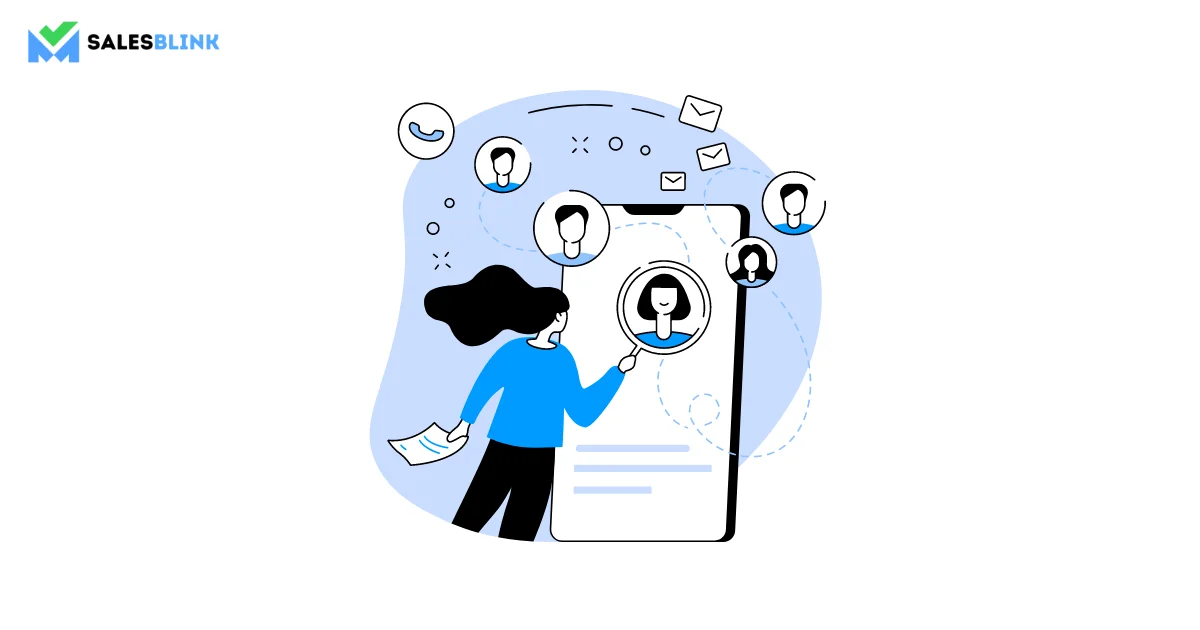
The step one in using the BANT framework to qualify prospects is to create an Ideal Customer Profile (ICP).
An ICP refers to a description of your ideal customer, including their company size,
industry, pain points, and budget. It helps align your sales and marketing teams and ensure you target the right prospects.
Here are some things to consider when creating your ICP:
- Industry: What industry does your ideal customer operate in?
- Size: How big is your ideal customer’s company?
- Location: Where is your ideal customer located?
- Challenges: What challenges are your ideal customers facing?
- Goals: What are your ideal customers trying to achieve?
- Budget: How much money are your ideal customers willing to spend?
Once you get your ideal customer, you can use this information to make marketing and sales campaigns more likely to succeed.
2. Know your prospect’s budget
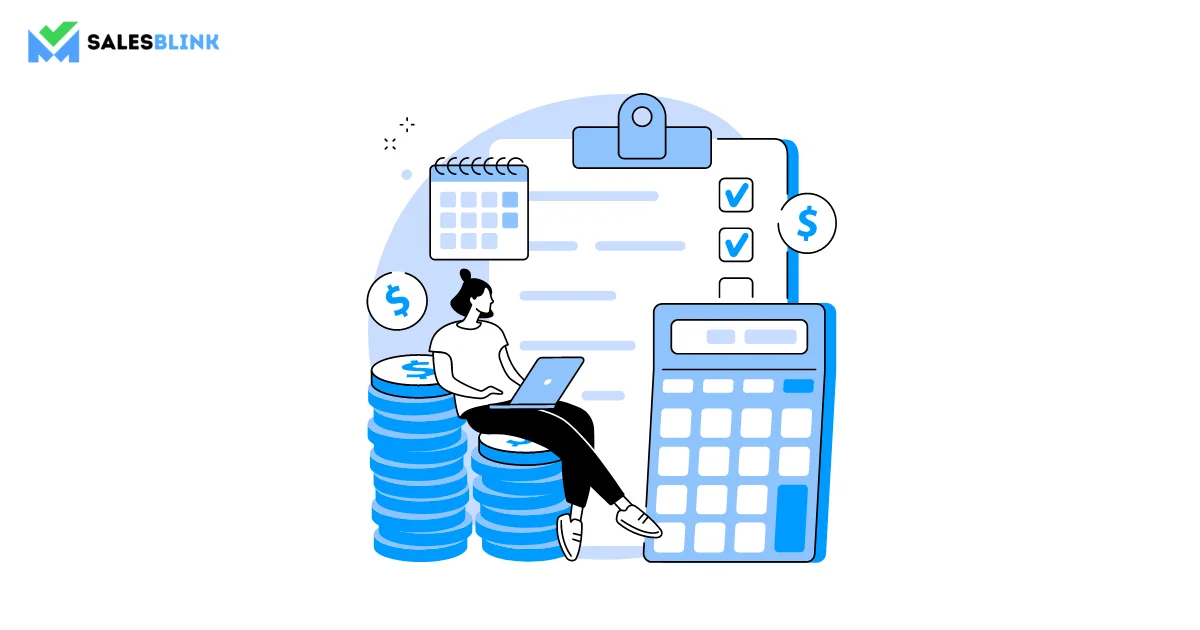
One of the most important factors in qualifying prospects is understanding their budget. This will help you determine whether your product or service fits their needs and whether they are likely to afford it.
This can be done by asking questions such as “What is your budget for this project?” or “What is the maximum amount you are willing to spend?”
You can also get a sense of their budget by asking about their pain points and how much they are currently spending to solve them. Once you understand your prospect’s budget, you can tailor your sales pitch accordingly.
3. Identify key decision-makers

The second component of the BANT framework is authority. You should ask the prospect about the people involved in the buying process to identify key decision-makers.
This includes their names, job titles, roles and responsibilities, pain points, challenges, goals, objectives, budget, and timeline. The goal is to understand the buying process and how the sales rep can best position their product or service.
Here are some sales qualifying questions that sales reps can ask to identify key decision-makers:
- Who is the person or team responsible for purchasing our product or service?
- What are their roles and responsibilities within the organization?
- What are their pain points and challenges?
- What are their goals and objectives?
By asking these questions, it is possible to understand the key decision-makers better and position their product or service to meet their needs.
4. Focus on the prospect’s pain points
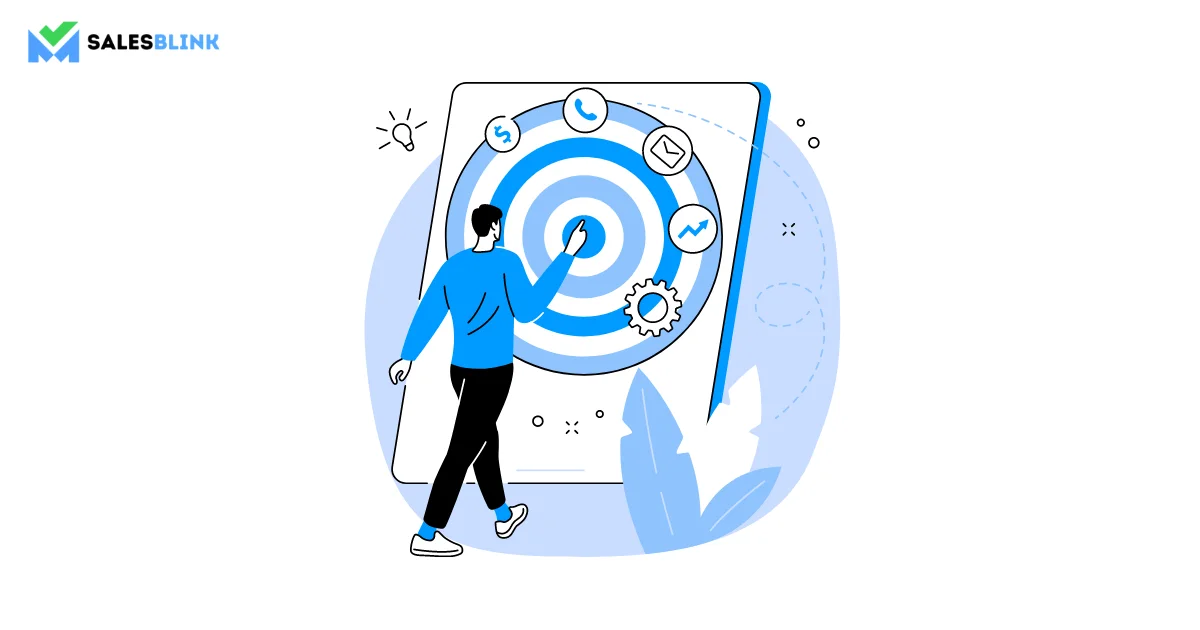
When qualifying prospects using BANT in sales, focusing on the prospect’s pain points is essential. This will help you to determine their need for your product or service and their urgency to purchase.
You can do this by asking questions about their current challenges, how they are currently addressing them, and their ideal solution. By understanding the prospect’s pain points, you can create a tailor-made sales pitch to address their needs and make a more compelling case for your product or service.
5. Know the prospect’s purchasing timeline
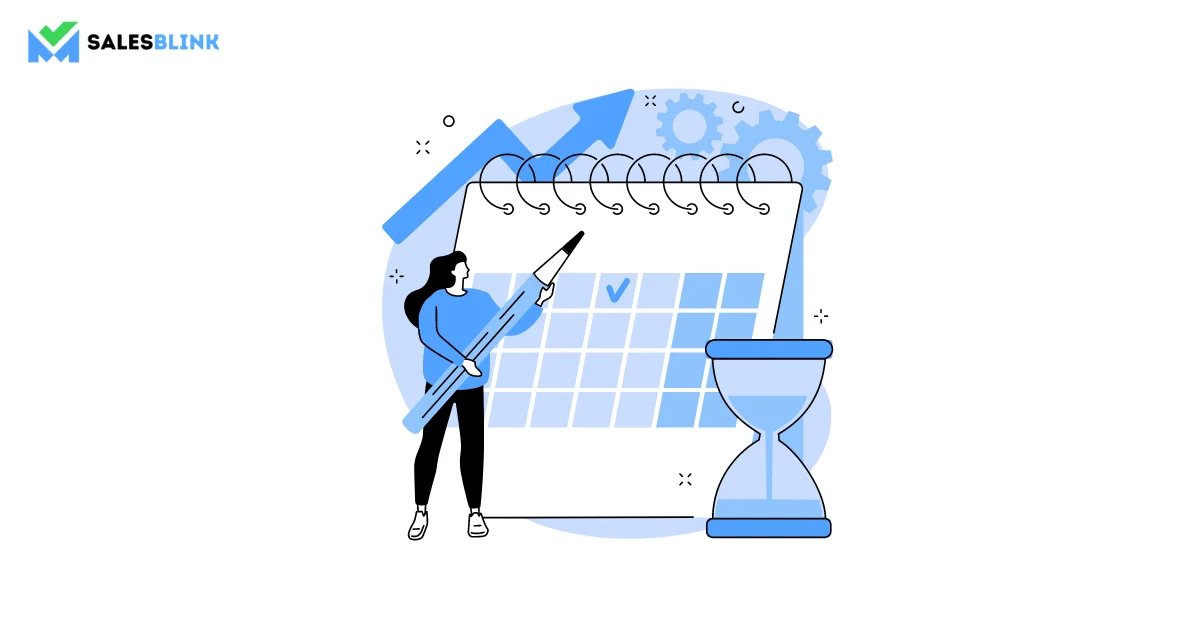
When is the prospect looking to make a purchase? The answer to this will help you prioritize your leads and concentrate on those most likely to close.
To find out the prospect’s purchasing timeline, you can ask them directly or use your CRM system to track their interactions with your company. Once you know the prospect’s purchasing timeline, you can adjust your sales process accordingly.
6. Qualify your prospects and talk about the steps that follow
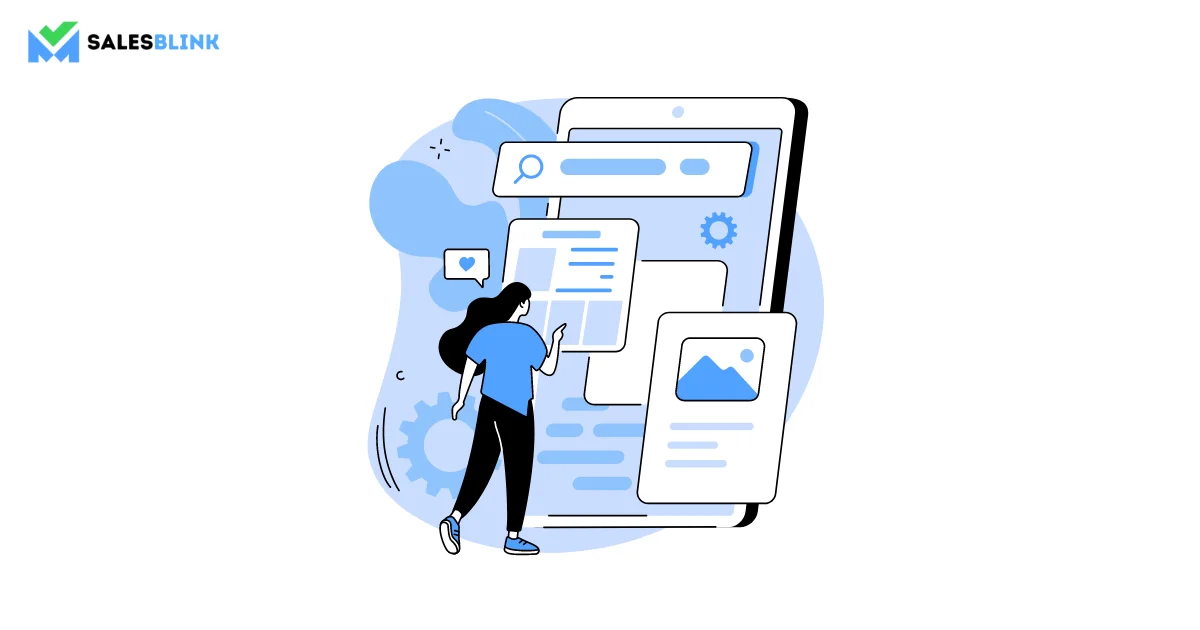
Once you have qualified a prospect using BANT, you can tell them about the next steps to move the sales process forward, which can be the following:
- Schedule a demo: This will allow the prospect to see your product or service in action and learn more about how it can benefit them.
- Follow up: Stay in touch with the prospect after the demo to answer any questions they may have and to keep the conversation going.
- Close the deal: Once the prospect is ready to buy, be prepared to close the deal and deliver on your promises.
7. Make Use of Tools to Track Your Progress
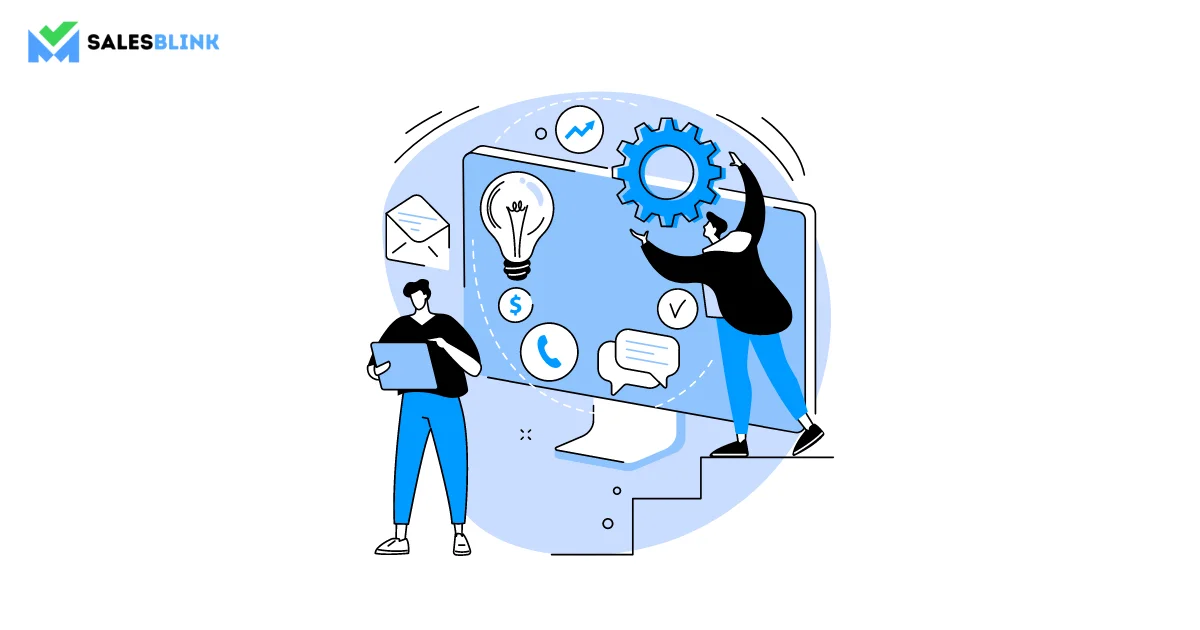
After qualifying a prospect through the BANT in sales, it is essential to use various tools to track your progress. This will help you stay on top of the sales process and ensure that you move the prospect toward a closed deal. You can use several tools to track the progress of your sales cycles.
Here are some of the tools that you can use to track your progress:
- CRM software: CRM software can support you in tracking your conversations with prospects, identifying prospects who are a good fit for your product or service, and measuring your results.
- Sales enablement tools: Sales enablement tools can provide the information you need to answer prospect questions, close deals, and grow your business.
- Sales analytics tools: Sales analytics tools can help you to measure your results and identify areas where you can improve.
BANT Lead Qualification Questions
With the right questions, you can understand whether a lead fits your product or service. This information can then be used to prioritize prospects and focus on those who are most likely to purchase your solution.
Here are some examples of BANT lead qualification questions:
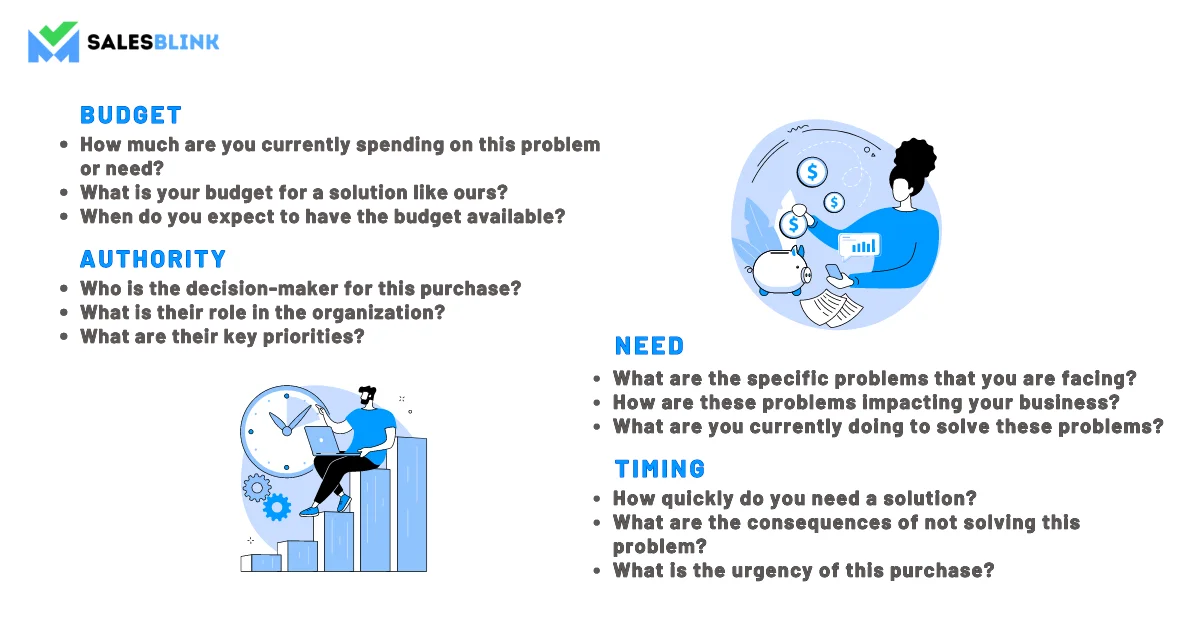
Budget
- How much are you currently spending on this problem or need?
- What is your budget for a solution like ours?
- When do you expect to have the budget available?
Authority
- Who is the decision-maker for this purchase?
- What is their role in the organization?
- What are their key priorities?
Need
- What are the specific problems that you are facing?
- How are these problems impacting your business?
- What are you currently doing to solve these problems?
Timing
- How quickly do you need a solution?
- What are the consequences of not solving this problem?
- What is the urgency of this purchase?
BANT Alternatives
While BANT can be a helpful framework for reps, it is essential to remember that it is just one framework and may not be the best fit for every situation.
Here are some alternatives to BANT:
1. SPIN
SPIN stands for Situation, Problem, Implication, and Need. This framework helps sales reps to understand the prospect’s situation, the problems they are facing, the implications of those problems, and the prospects’ need for a solution.
2. MEDDIC
MEDDIC is a sales methodology that helps sales reps qualify leads and close deals. It stands for Metrics, Economic Buyer, Decision Criteria, Decision Process, Identify Pain, and Champion. By asking the right questions and understanding the customer’s needs, sales reps can use MEDDIC to build stronger relationships and close more deals.
3. ANUM
ANUM is a sales framework focusing on Authority, Need, Urgency, and Money. It is a customer-centric approach to lead qualification that helps sales reps identify and convert more leads.
Start Using the BANT Framework to Boost the Sales Pipeline!
BANT is a sales framework that helps sales reps qualify leads. By evaluating the four critical criteria – Budget, Authority, Need, and Timeline, sales teams can efficiently prioritize and focus their efforts on leads having higher chances of converting into customers.
By using BANT, sales professionals can optimize their time and resources, ensuring that they dedicate their efforts to leads with a higher probability of success, ultimately leading to improved sales performance and revenue generation.
Hope our inputs will help you achieve your business goals more quickly. Don’t forget to thank us when you start closing deals faster!
FAQs
BANT stands for Budget, Authority, Need, and Timeline. It is a sales qualification framework that assesses a lead’s financial resources, decision-making power, specific requirements, and time frame for purchasing.
During a sales call, use open-ended questions to uncover the prospect’s budget, who has the authority to make the purchase decision, the prospect’s pain points, and their timeline for making a decision.
BANT is Budget, Authority, Need, and Timeline. MEDDIC refers to Metrics, Economic Buyer, Decision Criteria, Decision Process, Identify Pain, and Champion. BANT is a more traditional framework, while MEDDIC is more comprehensive.
